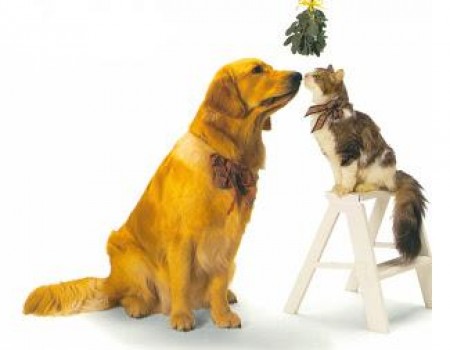Have you ever wondered where the tradition of putting up a tree for Christmas came from? Or why we light a menorah for Hanukkah? Find out about the interesting origins of many holiday traditions right here.
Christmas tree: Christmas trees have a long history. During the pre-Christian era, trees symbolized a connection between heaven and Earth, according to AllThingsChristmas.com. Similar ideas are found in the Old Testament - trees symbolized wisdom and life. The first known electrically illuminated Christmas tree was done by Edward H. Johnson, an associate of inventor Thomas Edison, on Dec. 22, 1882. Trees did not become widely popular in the U.S. until the middle of the 18 th century, but have grown steadily in popularity. Every year, between 25 and 30 million Americans celebrate Christmas with trees.
Menorah: Menorah is a Hebrew word meaning "candelabrum." It refers to the nine-branched ceremonial lamp in which the Hanukkah candles are placed and then blessed, according to JOI.org. The menorah originated as a religious symbol in biblical times. Originally, oil was used in the menorah. Over time, candles were substituted for the oil. Today, the menorah is displayed in the window of most Jewish homes.
Mishumaa Saba: The Seven Candles, called Mishumaa Saba, are a staple of Kwanzaa tradition. These are ceremonial objects with two primary purposes: to re-create symbolically the sun's power and to provide light. Mishumma Saba is three red, a black and three green candles. The black candle is a celebration of being black, of the unique qualities each person brings to the whole family or community. The green candles are vision candles - candles of hopes, dreams, and promises for the future. The red candles are struggle candles, past candles, candles the color of blood and courage. According to www.OfficialKwanzaaWebsite.org, all seven candles help African-Americans to remember a long struggle against injustice.
Mistletoe: A revered plant, Mistletoe is interesting since it has no roots yet remains green during the cold months of winter. According to AllThingsChristmas.com, Scandinavians associated the plant with Frigga, their goddess of love, and it may be from this that we derive the custom of kissing under the Mistletoe. People believed, and still do now, that those kissed under the Mistletoe had the promise of happiness and good luck in the following year.
Giving gifts: Giving gifts is a complex and important part of human interaction, especially around the holidays, according to the NYTimes.com. The exchanging of gifts is one of the core aspects of the modern Christmas celebration, making the Christmas season the most profitable time of year for retailers and businesses throughout the world. Christmas gift giving was banned by the Catholic church in the Middle Ages due to its suspected pagan origins. It was later rationalized by the church on the basis that it associated St. Nicholas with Christmas, and that gifts of gold, frankincense and myrrh were given to the infant Jesus. Today, gift giving is a staple of the holiday season, regardless of religious affiliation.




